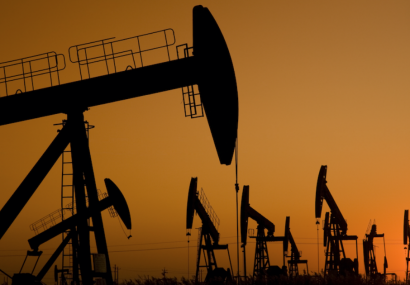The State of California has suffered through numerous wildfires during 2017 California wildfire season. The wildfires have caused the tragic loss of life and property. In addition, the wildfires have also increased the amount of greenhouse gas (GHG) emissions in the state.
Assembly Bill 32, the Global Warming Solutions Act of 2006 (AB 32) requires California to reduce its GHG emissions to 1990 levels by 2020. In 2012, the California Legislature created the Greenhouse Gas Reduction Fund (GGRF) to facilitate the achievement of reductions of GHG emissions in the state, consistent with the goals of AB 32. The GGRF is funded by auction proceeds from the California’s Cap-and-Trade Program and appropriations are made annually.
For Fiscal-Year 2017-18, the California Legislature appropriated approximately $1.5 billion from the GGRF to state agencies and programs to address GHG emission reductions. Approximately $320 million of the $1.5 billion in GGRF funds has been allocated to agencies and programs to address GHG emissions from wildfires.
Climate Change Impacts on Forests and GHG Impacts from Wildfires
The California Department of Forestry and Fire Protection (CAL FIRE) has counseled regarding the effects on forests and rangelands caused by climate change. According to CAL FIRE:
- . . .current climate models for forests and rangelands predict that California will soon be experiencing many changes as a result of climate change . . . includ[ing] increased wildfire frequency and intensity [and] longer fire seasons.
CAL FIRE notes that “[h]ealthy forests have an important role to play in addressing climate change” because “[t]rees remove carbon dioxide, the primary greenhouse gas of concern, from the air and store it as carbon in as they grow.”
However, when trees die, the carbon dioxide is released back into the atmosphere. When wildfires occur, the carbon storage in trees leads to large GHG emissions. According to the United States Forest Service and the National Park Service:
- . . .total emissions in 2013-2015 for GHGs from [California] wildfires on federal lands alone have consistently amounted to around 20-25 Million Metric Tons of Carbon Dioxide Equivalent (MMTCO2e) each year.
To put that number in perspective, according to the California Air Resources Board, between 2014 and 2015, GHG emissions in the state fell by approximately 1.5 MMTCO2e.
GGRF Funding to Address GHG Emissions from Wildfires
CAL FIRE has identified five forestry strategies to reduce or mitigate greenhouse gas emissions:
- •Reforestation to sequester more carbon
- Forestland conservation to avoid forest loss to development
- Fuels reduction to reduce wildfire emissions and utilization of those materials for renewable energy
- Urban forestry to reduce energy demand through shading, increase sequestration, and contribute biomass for energy generation
- Improved management to increase carbon sequestration benefits and protect forest health
In order to achieve the goals embodied in these strategies, CAL FIRE receives funding from the GGRF. CAL FIRE administers the funds received from the GGRF through its Forest Health GGRF Grant Program (Forest Grant Program). Funds from the Forest Grant Program are used to fund and implement:
- . . .projects to proactively restore forest health in order to reduce greenhouse gases, to protect upper watersheds where the state’s water supply originates, to promote the long-term storage of carbon in forest trees and soils, minimize the loss of forest carbon from large, intense wildfires, and to further the goals of [AB 32].
GGRF funding has been used for projects to:
- •Improve forest health
- Reduce wildfire vegetation (fuel) hazards
- Increase carbon sequestration in conifer forests and implement research projects on Demonstration state Forests
- Reforest degraded lands
- Establish and improve urban and community forests
- Conserve forestland by avoiding conversion to other uses
- Develop programmatic timberland environmental impact reports
- Utilize forest biomass
According to CAL FIRE, the “goal for all projects is to ensure California’s forests continue to be significant carbon storage ‘sinks’ and to reduce or avoid GHG emissions due to pest damage, wildfires, and loss of forest tree cover from development to non-forest uses.”
Conclusion and Implications
The 2017 California wildfire season has been one of California’s worst. In addition to the tragic loss of life and property, the environment has suffered due to large GHG emissions resulting from the release of carbon stored in trees. To address this issue, CAL FIRE will likely continue to use state funding received from the GGRF to fund projects to reduce or avoid GHG emissions from wildfires in the future. Because GGRF funds are appropriated annually amongst many different types of programs (for example, electric vehicle rebates, urban greening programs and alternative energy incentives), there may be an increase in the amount appropriated to CAL FIRE in the future as a result of this 2017 California wildfire season.
(Kathryn Casey)




